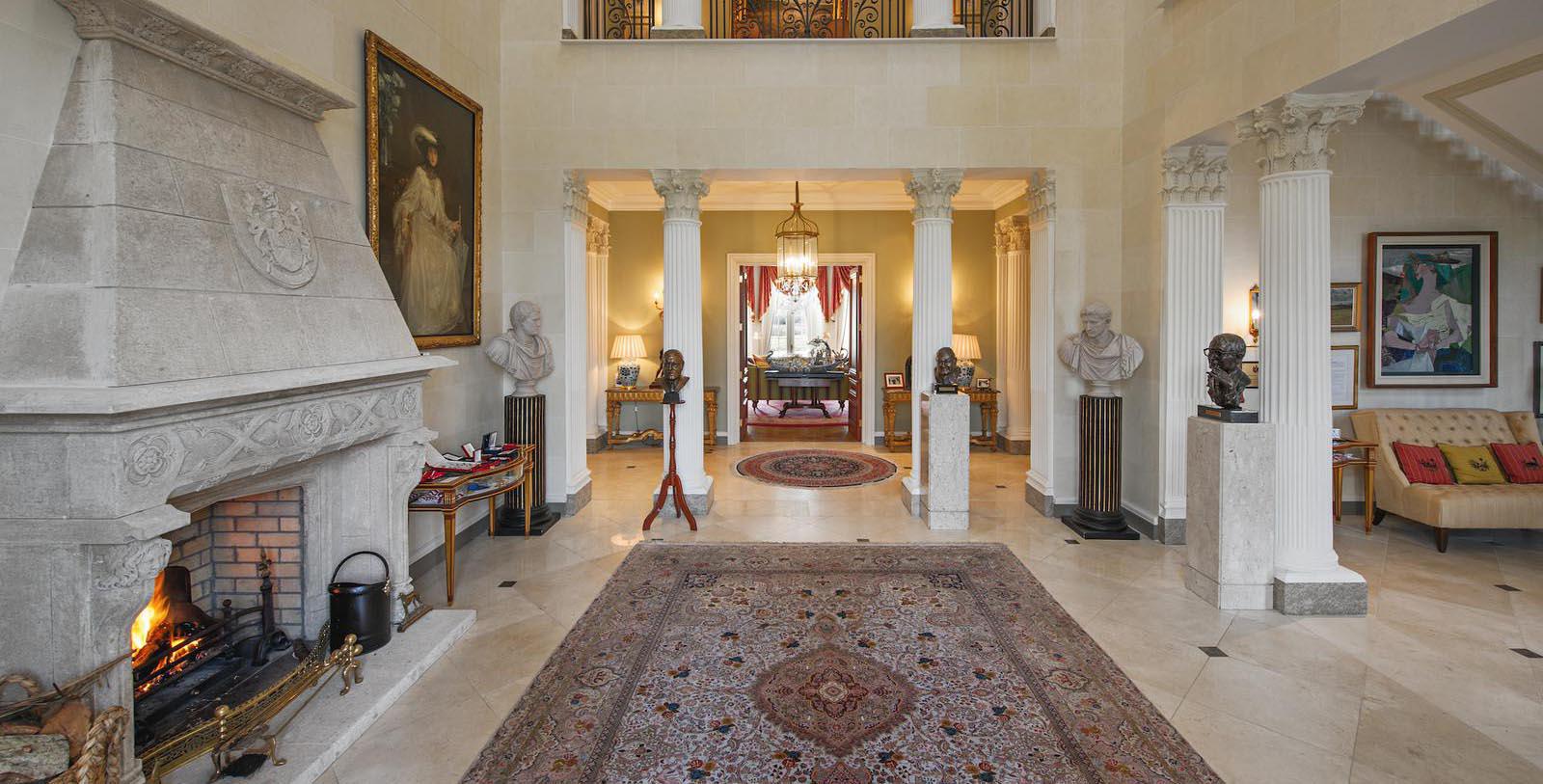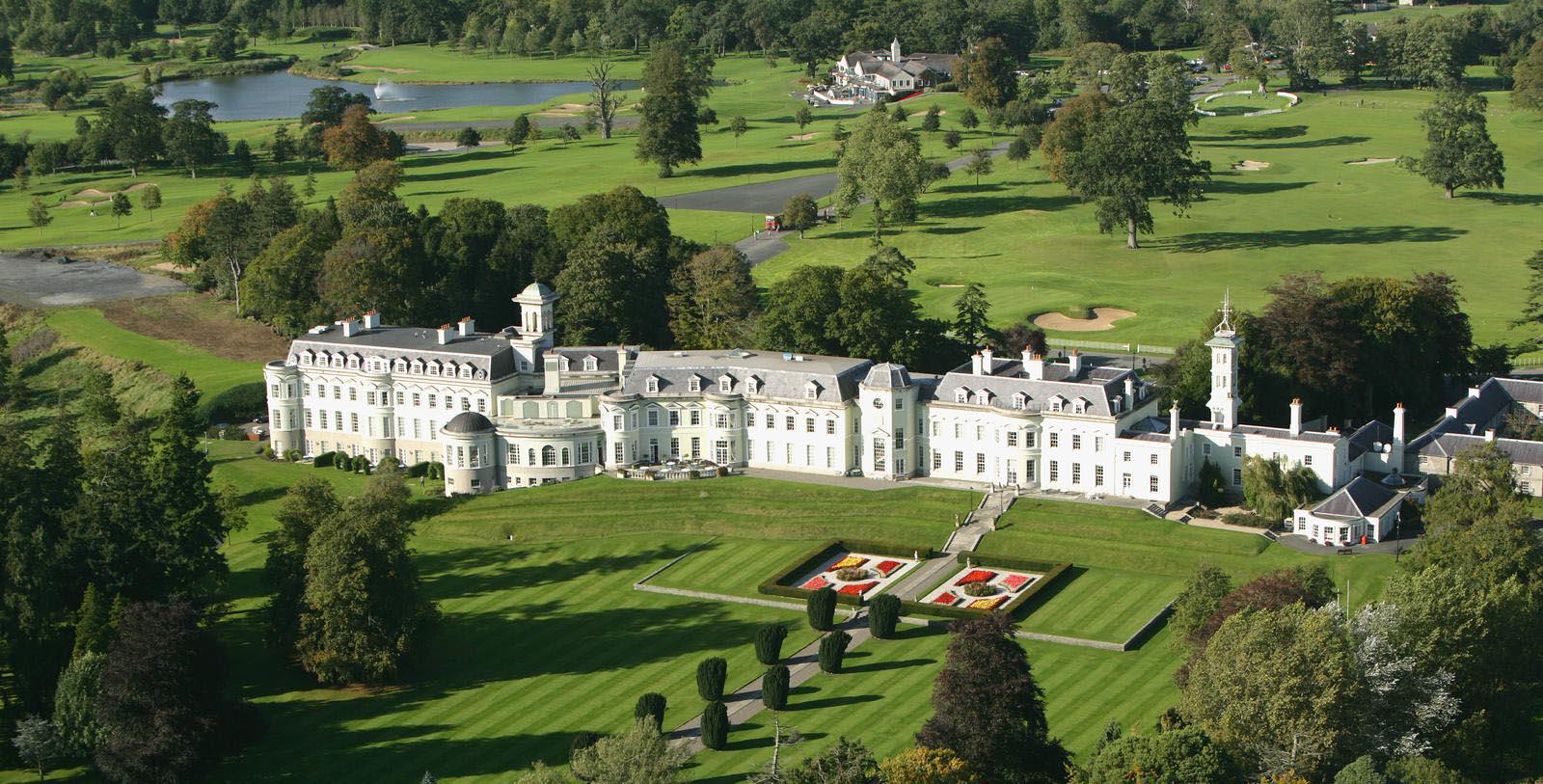Receive for Free - Discover & Explore eNewsletter monthly with advance notice of special offers, packages, and insider savings from 10% - 30% off Best Available Rates at selected hotels.
history
Discover The K Club, which was known as the Straffan House for more than a millennia.
A member of Historic Hotels Worldwide since 2014, The K Club has been one of Ireland’s most prestigious holiday destinations for the past several decades. Originally part of the “Straffan Estate,” The K Club was once a simple country manor in the heart of County Kildare. The land itself was first developed in the 6th century by local noblemen before it was handed over to Maurice Fitzgerald following the Anglo-Norman invasion of the island. Its deed stayed within the family for generations, until it eventually fell into the hands of King John I of England. Following the reign of King John, the area became a baronial estate owned by several of Ireland’s most affluent families. From the Gaydons to the Talbots, it saw its fair share of powerful Irish noblemen throughout the ages. But In 1831, the Hugh Barton—an incredibly successful wine merchant—purchased the land and constructed a beautiful manor that he called the “Straffan House.” He had subsequently amassed his personal fortune by importing wine from France amid the ongoing turmoil of the Napoleonic Wars. Having been exiled from the country at the time, Barton decided to make the Straffan House his official home. Het set about designing his new residence based upon the appearance of a magnificent château just outside of Paris in the town of Louveciennes. Barton went a step further, though, by adding on a beautiful Italianate-style tower to the structure. This fantastic historical building forms the eastern wing of The K Club today.
The Straffan House stayed within the family until 1949, when it entered a period of fluid ownership. It was during this turbulent period that the Jefferson Smurfit Group decided to invest in the location. It subsequently bought the entire complex in 1988, and heavily renovated the grounds into a luxurious resort called “The K Club.” Among the renovations that the organization initiated was the development of a massive, championship-caliber golf course. Designed by Arnold Palmer, Jefferson Smurfit Group had hoped that the new fairways would entice the Ryder Cup to host its annual tournament on the grounds in 1993. While the officials at the Ryder Cup eventually rejected their offer, other competitions under the umbrella of the Professional Golf Association (PGA) did arrive in the early 1990s. Word spread fast of the course’s brilliant design, and soon enough, the Ryder Cup accepted The K Club’s bid to host its tournament. As such, The K Club became the site of an incredibly memorable Ryder Cup competition in 2006. Today, The K Club continues to be a popular site among golfers the world over. Yet, the resort is also frequented by all sorts of international luminaries, from renowned dignitaries to Hollywood entertainers. Even several heads of state, including U.S. Presidents Bill Clinton and George W. Bush, have visited The K Club. Truly few places are better for a luxurious vacation than this wonderful historic resort.
-
About the Location +
Ireland is a nation deeply defined by its history, which harkens back millennia. Nowhere is this more evident than in County Kildare. Some of the earliest known human settlements date to Neolithic times, although the many of its current communities first emerged around several Christian monasteries in the 5th century. Perhaps the greatest of those churches was the one established by St. Brigid along the western side of the famed Curragh Plain known as “Cill Dara.” At the time, County Kildare was the domain of the medieval Kings of Leicester. Vikings continuously harassed the area at the dawn of the Viking Age, frequently travelling across the Irish Sea to attack the area through the 9th and 10th centuries. Some Viking bands eventually settled in portions of County Kildare, such as the group of Danish marauders that founded the town of Leixlip. Peace briefly returned to the region until the Normans arrived in the 1170s. Led by Richard de Clare, 2nd Earl of Pembroke, the invaders deprived the local Gaelic clans of their lands and raised many of the towering castles that still dot the region today. The natives fled into the nearby mountains and bogs to wage a constant guerilla war that lasted for centuries. The Normans, meanwhile, created many new communities in an area that came to be known as “The Pale,” of which County Kildare was a part.
A few of the area’s most prominent noble families, such as the Fitzgeralds and the Geraldines, became quite established around this time. The Anglo-Norman invaders and the native Gaels gradually achieved peace with one another over several generations, too. Even though intermarriages had somewhat cooled the cultural tensions between the two groups, political turmoil between the Irish and English nobles reignited conflict on many occasions. In the 16th century, for instance, the Tudor monarchs of England sought to enhance their power over County Kildare by aggressively suppressing the autonomy of the locals. This agitation was only made worse when Lord Protector Oliver Cromwell—who briefly overthrew the English monarchy a century later—increased the activity tenfold. Rebellions to such prohibitive policies occurred, culminating with the uprising of 1798 that sought to remove English influence once and for all. Inspired by the successful movements in America and France, the Irish in County Kildare—and Ireland as a whole—unsuccessfully attempted to establish a sovereign republic free from Great Britain. While the rebellion had transpired all over Ireland, it emerged in such places like Nass, Prosperous, and Ballymore-Eustace that May. One of its central leaders, Theobald Wolfe Tone, had connections to County Kildare, as his family were scattered throughout such towns like Blackhall and Clane.
Ireland finally became independent with the signing of the Anglo-Irish Treaty in December 1921, ending years of political strife. Nevertheless, County Kildare had also emerged as one of the nation’s most prosperous areas a century prior. Agriculture proliferated throughout the county as a result of the fertile soil found at Curragh Plain, while new railroads introduced an unprecedented number of goods across the land. Its relative financial security subsequently spared County Kildare from the effects from various economic calamities, the most notable of which was the Great Famine of the 1840s. The creation of several military barracks along the major thoroughfares leading into Dublin, Cork, and Limerick spawned an important source of economic activity in the 19th century, as many local businesses thrived on serving their soldiers. When the barracks were vacated in the early 20th century, newer industries—such as Irish Ropes and Newbridge Cutlery—appeared to fill the vacuum. Soon enough, they were joined by the likes of international manufacturing giants Hewlett-Packard, Intel, and Pfizer. Today, County Kildare is one of the richest outside Dublin and it among Ireland’s most vibrant. Equine sports now define the local economy, yet farming is still paramount throughout the region.
-
About the Architecture +
The K Club displays some amazing Renaissance Revival-style architecture in all of County Kildare. The specific blend of Renaissance Revival architecture present at the resort is derived from late 17th-centnury France, as its most historic component—the Straffan House—was modeled after the grand Château de Louveciennes just west of Paris. Renaissance Revival architecture—sometimes referred to as "Neo-Renaissance”—is a group of architecture revival styles that date back to the 19th century. Neither Grecian nor Gothic in their appearance, Renaissance Revival-style architecture drew inspiration from a wide range of structural motifs found throughout Early Modern Western Europe. Architects in France and Italy were the first to embrace the artistic movement, who saw the architectural forms of the European Renaissance as an opportunity to reinvigorate a sense of civic pride throughout their communities. As such, those intellectuals incorporated the colonnades and low-pitched roofs of Renaissance-era buildings, with the characteristics of Mannerist and Baroque-themed architecture. Perhaps the greatest structural component to a Renaissance Revival-style building involved the installation of a grand staircase in a vein similar to those located at the Château de Blois and the Château de Chambord. This particular feature served as a central focal point for the design, often directing guests to a magnificent lobby or exterior courtyard. Yet, the nebulous nature of Renaissance Revival architecture meant that its appearance varied widely across Europe. As such, historians today often find it difficult to provide a specific definition for the architectural movement.
-
Famous Historic Guests +
Sean Connery, actor known for his roles in such films like, Goldfinger, The Untouchables, and The Hunt for Red October.
Joan Collins, actress known for her roles in such films like, The Stud, Land of the Pharaohs, and The Bravados.
Arnold Palmer, winner of 7 major golf championships that include the PGA Championship and the Masters Tournament.
Prince Albert II of Monaco
Bill Clinton, 42nd President of the United States (1993 - 2001)
George W. Bush, 43rd President of the United States (2001 - 2008)


























